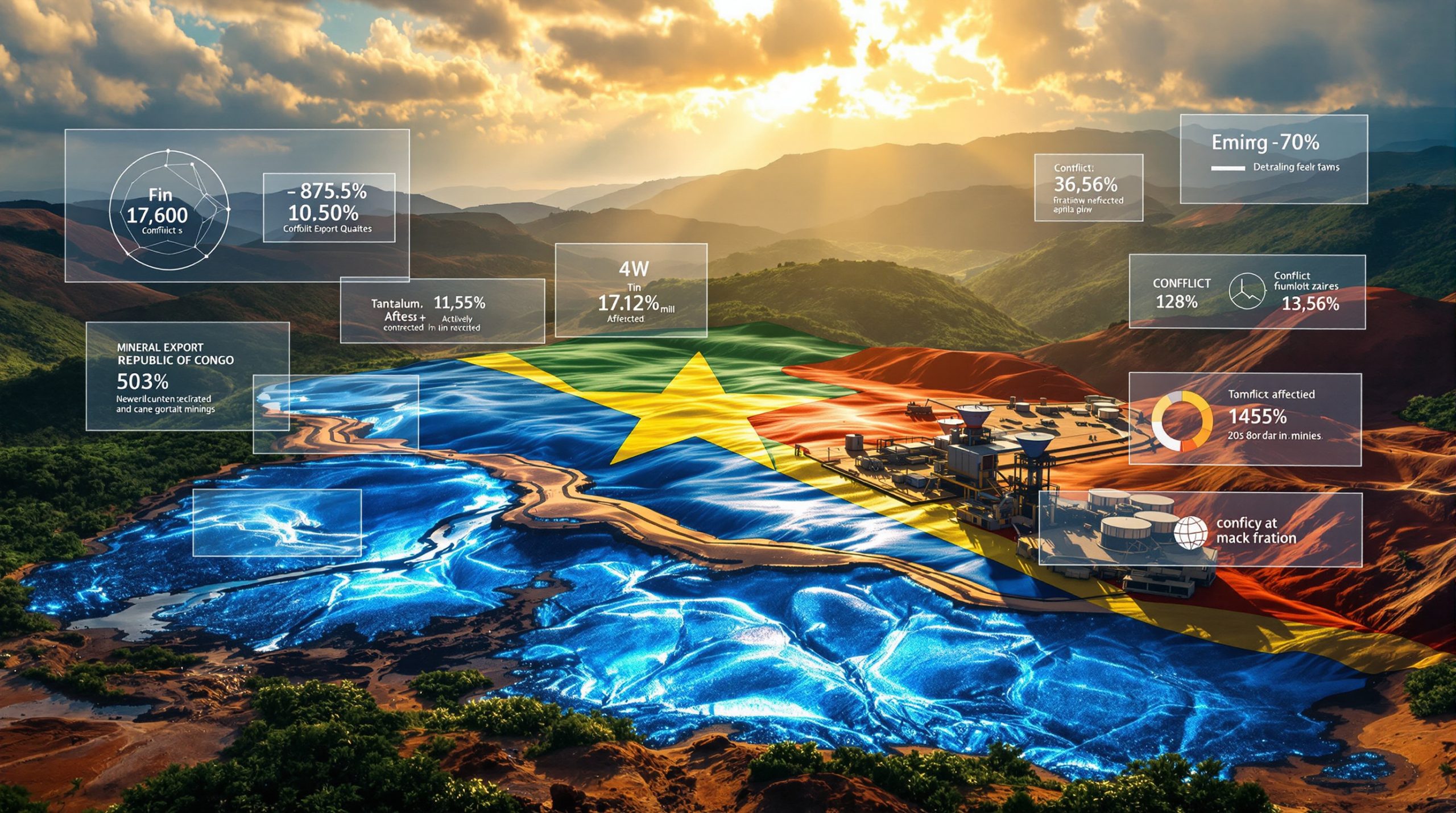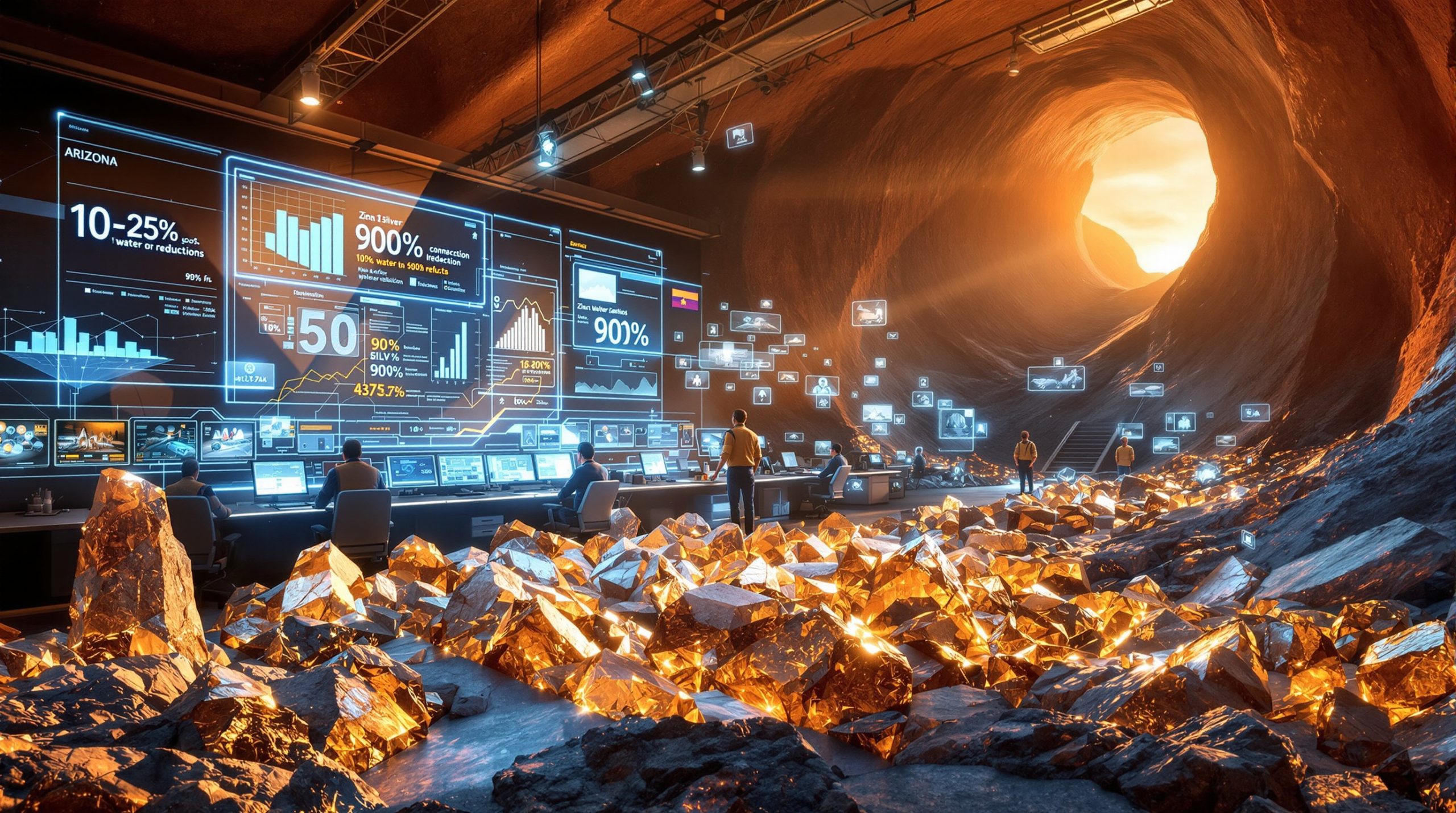What Is Tungsten and Why Is It Critical?
China's tungsten export controls have created a seismic shift in global supply chains, raising urgent questions about Western nations' access to this critical defense metal. With approximately 90% of the world's tungsten flowing through China, these new restrictions have profound implications for industries ranging from defense to automotive manufacturing. As geopolitical tensions rise, understanding tungsten's strategic importance and the emerging alternatives to Chinese supply has become essential for policymakers and industry leaders alike.
Strategic Applications of Tungsten
Tungsten stands as one of the most strategically critical metals in the modern industrial and defense landscape. With the highest melting point of any metal (3,422°C), exceptional hardness, and high density, tungsten possesses a unique combination of properties that make it irreplaceable in numerous applications. In defense sectors, tungsten is crucial for armor-piercing munitions, missile components, armor plating, and electromagnetic shielding systems that protect sensitive electronic equipment. The semiconductor industry relies on tungsten for circuit fabrication, while medical applications utilize its radiation-shielding properties for cancer treatments.
Beyond these specialized uses, tungsten carbide remains the backbone of automotive, aerospace, and mining industries through cutting tools, drill bits, and wear-resistant components that withstand extreme conditions. Since the Cold War era, tungsten has been classified as a strategic defense metal, with its importance only growing as technology advances. Unlike many other industrial materials, tungsten offers a rare combination of properties that cannot be replicated with substitutes, creating a dependency that extends across both civilian and military applications.
Current Global Supply Dynamics
The tungsten supply chain represents one of the most concentrated mineral dependencies in the global economy. While commonly reported that China controls about 80% of global production, the reality is more severe—approximately 90% of the world's tungsten flows through Chinese channels. This concentration stems not only from China's domestic mining operations but also from its processing capacity and ability to absorb production from other countries like Russia and North Korea.
Following Russia's invasion of Ukraine, Western sanctions have effectively redirected Russian tungsten exports (previously about 4% of global supply) toward China rather than European markets. Similarly, North Korean tungsten production has historically been routed through China due to international sanctions. This consolidation of supply channels has effectively made China the de facto gatekeeper of global tungsten access, creating an unprecedented level of dependency for Western nations.
With Western tungsten mines largely depleted or shuttered during the post-Cold War mineral market collapse, the defense industries of NATO countries now find themselves in the extraordinary position of relying on potential adversaries for critical minerals boost. This dependency represents a strategic vulnerability unlike any seen during previous periods of great power competition.
How Are China's Export Controls Changing the Market?
Recent Export Restrictions
China has systematically tightened controls on tungsten exports in a pattern mirroring its October 2023 critical export restrictions on antimony, another critical mineral. These controls include stricter licensing requirements, quota limitations, and extended approval timelines that effectively throttle global supply. According to industry experts, no significant tungsten export permits have been granted since late 2023, creating mounting pressure throughout global supply chains.
These restrictions coincide with broader tensions in US-China trade relations, particularly regarding semiconductor technology access and export controls. While officially framed as environmental conservation measures or domestic supply security initiatives, the timing suggests these policies serve as strategic leverage in an escalating technological competition. Unlike temporary trade measures, these controls appear designed for long-term implementation, forcing permanent restructuring of global supply networks.
The impacts are already visible in price volatility and lengthening lead times for tungsten products, with many Western manufacturers reporting supply uncertainties not experienced since World War II shortages. As stockpiles diminish, the full effects of these restrictions are expected to cascade through defense, automotive, and aerospace supply chains throughout 2024 and 2025.
Strategic Implications for Western Nations
The strategic implications of China and tungsten export controls extend far beyond simple market disruptions, striking at core defense capabilities of Western nations. With 90% of raw materials needed for munitions and armor production now effectively requiring permission from China, Russia, or North Korea, Western defense planners face an unprecedented vulnerability. No NATO member can currently produce critical defense materials independently, creating a strategic dependency unimaginable during previous eras of great power competition.
This dependency has immediate operational implications for ongoing conflicts and defense readiness. Artillery shell production for Ukraine support efforts has already experienced delays due to material shortages, while next-generation weapons systems face development hurdles without reliable tungsten supplies. The multi-year timeframes required to develop alternative sources mean that even rapid policy responses cannot address immediate vulnerabilities.
Perhaps most concerning is that this dependency represents a systemic failure in strategic material planning since the end of the Cold War. As Western nations reduced defense stockpiles and embraced globalized supply chains, the fundamental vulnerability of depending on potential adversaries for defense materials was overlooked. This oversight now requires comprehensive reassessment of mineral security policies and defense industrial planning across NATO nations.
Who Are the Key Players Outside China?
Almonty Industries' Strategic Position
Almonty Industries has positioned itself as the primary non-Chinese tungsten supplier, with its Sang Dong mine in South Korea scheduled to begin production within months. This project, under development since 2015, represents the culmination of a typical 8-10 year development cycle in democratic nations with rigorous permitting requirements. While Almonty acknowledges it cannot fill the entire 90% supply void left by Chinese restrictions, the Sang Dong operation will have meaningful impact as the largest new tungsten project globally.
In a strategic alignment with changed geopolitical realities, Almonty is redomiciling to the United States and collaborating with America's Defense Initiative (ADI), the country's largest defense lobbyist. This partnership mirrors ADI's role with Mountain Pass, the sole rare earth mine in the United States, highlighting tungsten's elevation to critical status in defense planning. The company's existing Portuguese operation already supplies premium tungsten products to aerospace and defense customers, establishing technical credibility in these demanding markets.
Almonty's focus on processing excellence and vertical integration distinguishes it from previous tungsten ventures that failed due to recovery inefficiencies. With 136 years of operational experience at its Portuguese mine, the company has developed proprietary processing techniques that achieve exceptionally high recovery rates and product purity, allowing it to command a 25% premium to market prices even before recent supply disruptions.
Other Emerging Suppliers
Beyond Almonty, the landscape of alternative tungsten suppliers remains remarkably limited compared to other critical minerals. Australian company EQ Resources has recently secured $124 million in offtake deals, signaling growing market demand for non-Chinese supply. However, the scale of this and similar projects falls far short of addressing the global supply gap created by Chinese restrictions.
The scarcity of development projects reflects tungsten's unique challenges – ore bodies are rare, processing is technically demanding, and capital costs are high relative to output volumes. Unlike lithium or copper, where dozens of projects advance simultaneously worldwide, tungsten faces a development pipeline drought. Industry analysts confirm that no other sizable tungsten projects are expected to come online for at least another decade, creating an extended period of supply constraint.
This limited development pipeline stems from tungsten's niche status during the decades of Chinese dominance, when low prices discouraged exploration and development outside China. The specialized knowledge required for successful tungsten operations further constrained development, as previous generations of processing experts retired without transferring knowledge. These factors combined create a severe bottleneck in diversifying global supply, even as geopolitical imperatives for such diversification grow more urgent.
What Makes Sang Dong Mine Significant?
Historical Context and Production Capacity
The Sang Dong mine's significance stems from its remarkable history as a proven production center rather than a speculative venture. For 40 years until its 1993 closure, Sang Dong operated as the world's largest tungsten mine, establishing a production track record that removes many uncertainties typically associated with mining startups. This historical operation provides invaluable geological data, infrastructure foundations, and processing knowledge that reduce development risks.
As an underground project with ore grades approximately five times higher than Almonty's Portuguese operation, Sang Dong offers exceptional resource quality in an industry where grade determines economic viability. These geological advantages translate to lower production costs and greater resilience against potential Chinese price manipulation. The mine's location in South Korea, a U.S. treaty ally with advanced infrastructure and skilled workforce, further enhances its strategic significance.
The mine's production capacity, while unable to fully replace Chinese supply, represents the largest single contribution to supply diversification possible in the near term. Its output will primarily serve high-value applications in aerospace and defense, where tungsten qualities cannot be compromised, rather than attempting to compete with Chinese volume production for industrial applications.
Government and Financial Support
Sang Dong's development has secured backing from an impressive consortium of international financial and governmental partners, highlighting its strategic significance beyond commercial considerations. KFW-Ipex, described by industry experts as "the tier one project finance lender on the planet," has committed substantial financing – the first tungsten project in their history to receive such support.
This financial backing extends beyond traditional commercial lending, with support from the Austrian government, South Korean government, and multiple other governmental stakeholders recognizing the project's importance to supply chain analysis. The financing structure includes hard floor contracts that provide guaranteed income if prices collapse due to potential Chinese market manipulation, creating resilience against classic market destruction tactics previously used to eliminate non-Chinese producers.
The multilateral government interest in the project reflects a new paradigm in critical mineral development, where strategic considerations complement traditional economic criteria. This approach acknowledges that market forces alone cannot address critical supply vulnerabilities in reasonable timeframes, especially for defense-critical materials. The resulting financing packages offer terms unavailable to purely commercial ventures, creating a new model for critical mineral development in Western economies.
How Does Tungsten Processing Affect Supply Security?
Technical Challenges in Tungsten Production
Processing complexities, rather than mining limitations, represent the true bottleneck in establishing secure tungsten supply chains. Industry analysis has identified that 78% of failed tungsten ventures historically attributed their bankruptcy to processing challenges rather than resource limitations. Unlike many commodities where standardized processing methods apply across different deposits, tungsten requires highly customized approaches to accommodate mineralogical variations between ore bodies.
The technical knowledge required for successful tungsten recovery remains concentrated in a small expert community, with many skilled technicians previously employed in now-closed Western operations. This knowledge gap has proved fatal for many attempted restarts, as academic understanding cannot substitute for operational experience in tungsten processing. The specialized equipment, reagent combinations, and process controls needed for economic tungsten recovery create barriers to entry that financing alone cannot overcome.
Management track record and experience therefore become critical success factors for tungsten operations, with Almonty's Portuguese operation achieving the highest recovery rates for any gravity plant in the tungsten industry. This processing excellence creates a competitive advantage that transcends resource size, allowing smaller operations with technical expertise to outperform larger mines struggling with recovery inefficiencies.
Almonty's Processing Advantages
Almonty's Portuguese operation demonstrates how processing excellence creates sustainable competitive advantages in tungsten production. By achieving industry-leading recovery rates and producing exceptionally clean, homogeneous material, the operation commands a 25% premium to standard market prices. This premium pricing reflects the value manufacturing customers place on consistent, high-quality feedstock that minimizes production disruptions and quality variations.
The company's 136 years of operational experience in Portugal has created what executives describe as a "well-oiled machine," with institutional knowledge preserved through generations of operators. This knowledge continuity provides solutions to processing challenges that would otherwise require years of trial-and-error to develop. The resulting processing systems produce tungsten concentrate meeting the most demanding specifications for aerospace and defense applications, where performance requirements cannot be compromised.
This processing expertise transfers directly to the Sang Dong project, where customized systems incorporate lessons from both the Portuguese operation and the mine's previous production history. By avoiding the experimental approach that has doomed many tungsten startups, Almonty's processing strategy creates supply security through operational reliability rather than merely resource control.
What Are the Market Conditions for Tungsten?
Supply-Demand Outlook
Tungsten increasingly shows characteristics of a "scarce resource" with declining reserves, particularly in China where decades of intensive production have depleted the most accessible deposits. Chinese domestic reserves face declining grades and rising production costs, creating internal pressure that partly explains tightening export controls. With no significant new projects coming online beyond Sang Dong, supply constraints appear structural rather than cyclical.
Prices continue to elevate in response to these fundamentals, with particularly sharp increases for high-purity material meeting aerospace and defense specifications. The tungsten market has entered what industry participants describe as "uncharted waters," with traditional price cycles disrupted by geopolitical factors overriding normal market mechanisms. Price volatility has increased dramatically, with regional premiums emerging for material available without Chinese supply chain exposure.
The limited alternative projects globally compared to other critical minerals creates a prolonged adjustment period, as supply diversification cannot match the pace of geopolitical change. Unlike battery metals or copper, where dozens of development projects can accelerate in response to price signals, tungsten faces a multi-year lag between market incentives and production responses due to technical complexities and limited development pipeline.
Government Engagement
Government engagement with tungsten supply security has intensified dramatically, with defense sectors showing unprecedented interest in securing access. After decades of treating tungsten as a commercial commodity best sourced through global markets, Western defense ministries now recognize its strategic significance through direct engagement with producers. This attention reflects belatedly acknowledging vulnerabilities that material specialists had identified for years.
Potential talks with US or allied governments for funding or offtake guarantees represent a paradigm shift in critical mineral policy. Rather than relying solely on market incentives, governments increasingly recognize the need for direct intervention in establishing secure supply chains for defense-critical materials. This approach acknowledges that strategic necessities may require financial support beyond what commercial markets would provide.
This governmental interest drives a strategic shift from Almonty's previous focus on automotive and aerospace applications toward defense priorities. The company's redomiciling to the United States facilitates deeper engagement with defense procurement systems, allowing alignment with national security priorities that may override purely commercial considerations. This reorientation reflects tungsten's return to its Cold War status as a strategic material rather than merely an industrial commodity.
How Are Geopolitics Reshaping the Tungsten Market?
Strategic Realignment of Supply Chains
Western nations have belatedly recognized their neglect of defense material supply chains since the Cold War ended, creating vulnerabilities that now require urgent attention. The comfortable assumption that materials would remain available through globalized markets regardless of geopolitical tensions has proven dangerously naive, particularly for minerals dominated by potential adversaries. This recognition drives comprehensive reassessment of mineral security frameworks across NATO countries.
Current assessments show insufficient munitions and armaments stockpiles to sustain extended conflicts, with material constraints rather than manufacturing capacity limiting production increases. Companies like Almonty have rapidly reoriented their business models toward defense applications in response to these priorities, seeking what executives describe as "sanctuary" while developing strategies to serve South Korean, European, and US defense needs simultaneously.
This strategic realignment extends beyond individual companies to reshape entire mineral sectors. Materials previously evaluated purely on commercial terms now receive national security premium valuations, reflecting their irreplaceable role in defense capabilities. This valuation shift creates sustainable economic models for domestic production that previously appeared uncompetitive with Chinese imports, fundamentally altering investment calculations for critical mineral projects.
Investment Implications
Market valuations increasingly reflect strategic positioning in the evolving commodity super cycle landscape, with companies addressing supply chain vulnerabilities commanding significant premiums. Almonty cites 8-9 times higher valuation than competitors with similar production profiles but without strategic positioning, demonstrating investors' recognition of geopolitical factors beyond traditional metrics.
Defense applications increasingly offer premium pricing over industrial uses, reflecting both higher product specifications and supply security premiums. This pricing stratification creates sustainable economic models for Western production despite higher regulatory and labor costs, provided operations focus on high-specification material rather than competing directly with Chinese bulk production. The resulting business models resemble specialty chemicals producers more than traditional mining operations, with value derived from technical specifications and reliability rather than merely production volume.
Guaranteed income contracts are becoming more common in response to supply uncertainties, providing producers with baseline revenue certainty that facilitates financing and development. These contract structures recognize that traditional spot market mechanisms cannot adequately address strategic supply requirements, particularly when potential market manipulation by dominant suppliers represents a known risk. This evolution in contracting practices represents another adaptation to the new geopolitical market strategies shaping critical mineral markets.
FAQs About Tungsten Supply Chain Issues
What makes tungsten so critical for defense applications?
Tungsten's unique combination of properties makes it essentially irreplaceable in modern defense systems. Its extreme hardness and density make it the primary material for armor-piercing munitions, while its high melting point allows use in missile components that must withstand extreme conditions. For armor plating, tungsten's density provides maximum protection with minimum weight, critical for vehicle mobility. These properties cannot be replicated with alternative materials, creating true strategic dependency rather than merely economic preference.
How quickly can new tungsten mines be developed?
Developing new tungsten mines in democratic nations typically requires 8-10 years from acquisition to production, creating significant challenges for rapidly addressing supply shortages. This extended timeline reflects rigorous environmental permitting processes, technical challenges in processing design, and financing hurdles
Ready to Stay Ahead of the Next Major Mineral Discovery?
Discover how major mineral discoveries like tungsten can lead to significant market returns by exploring Discovery Alert's dedicated discoveries page, where our proprietary Discovery IQ model instantly identifies high-potential ASX announcements before the broader market.




